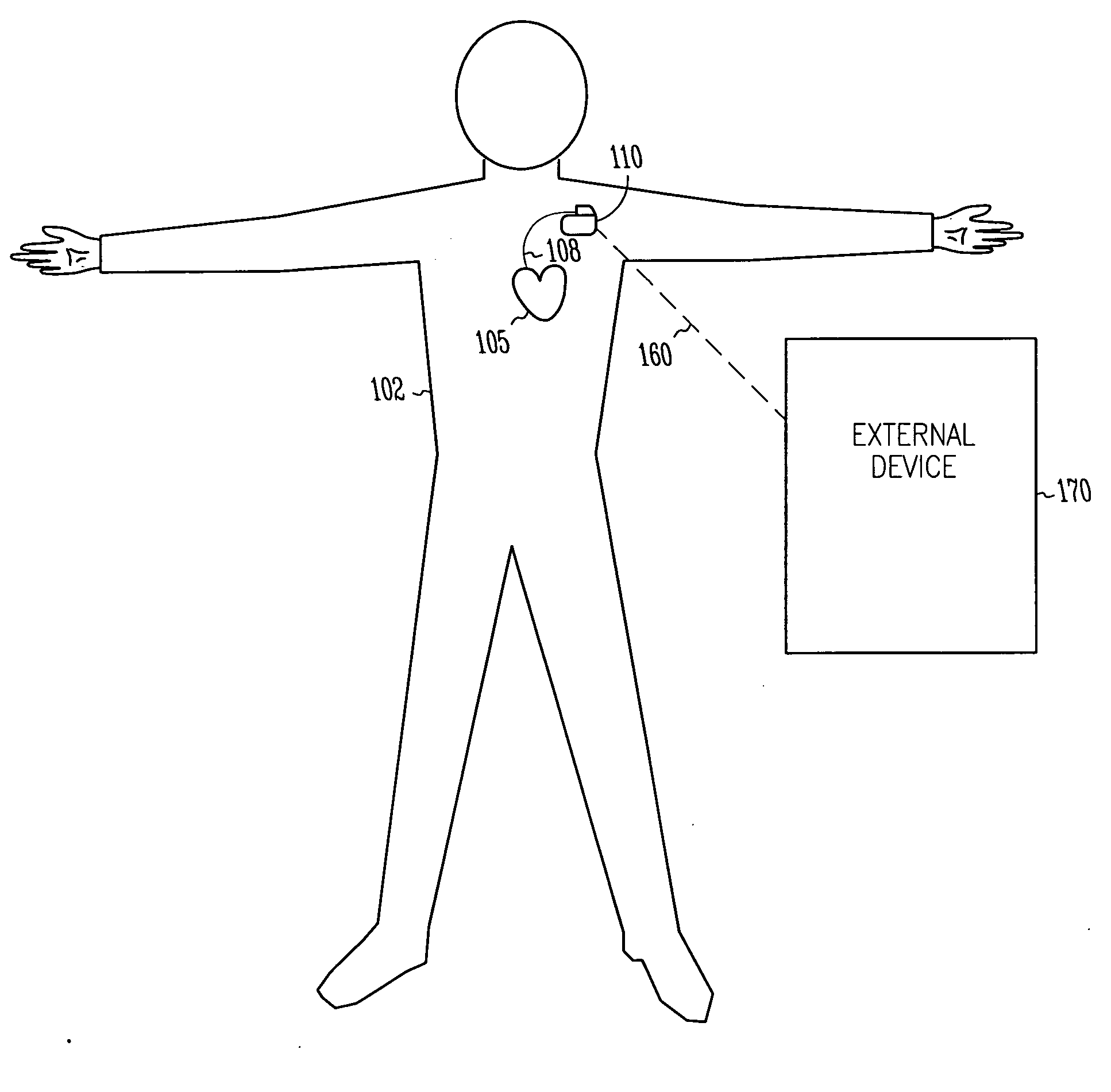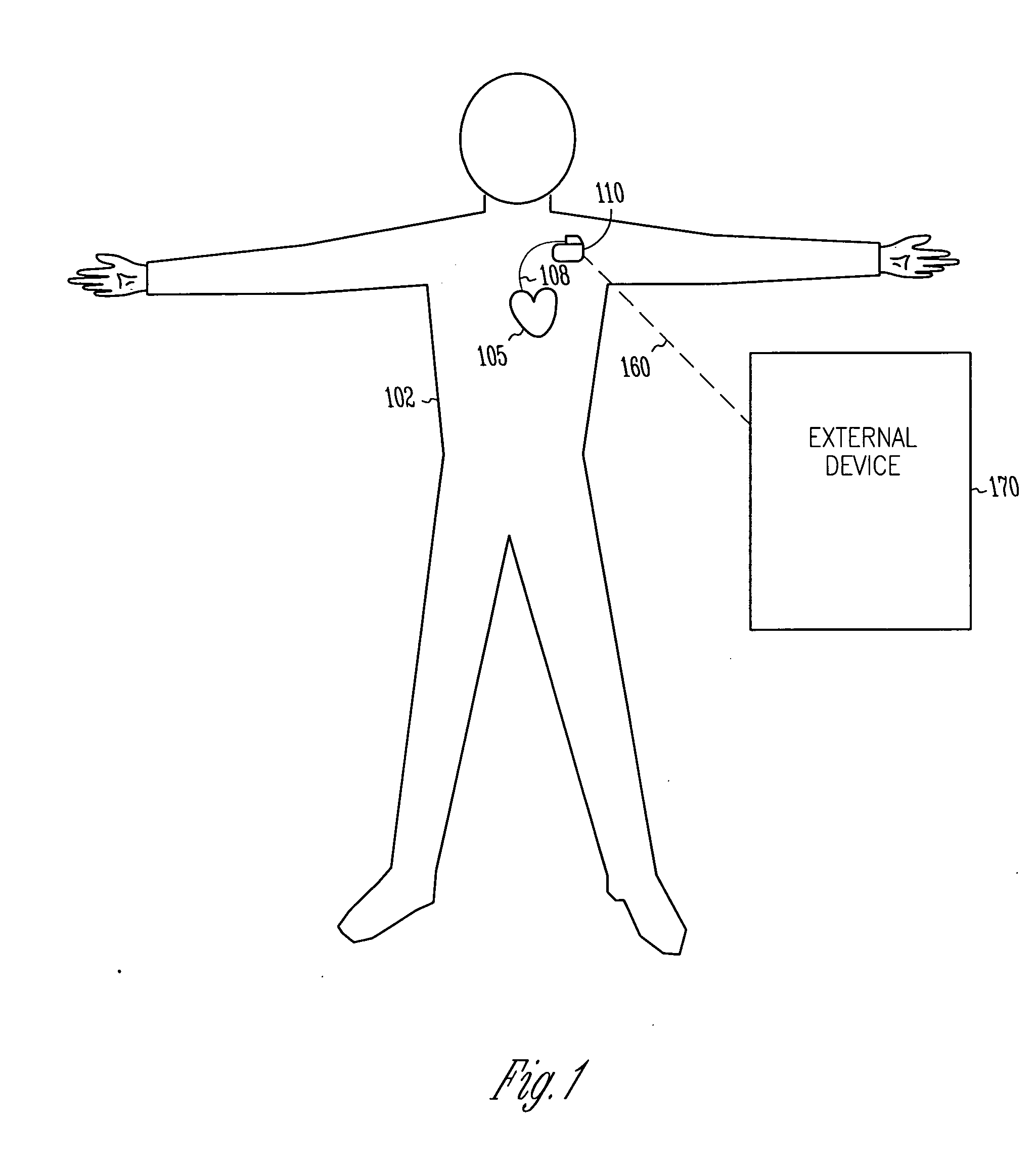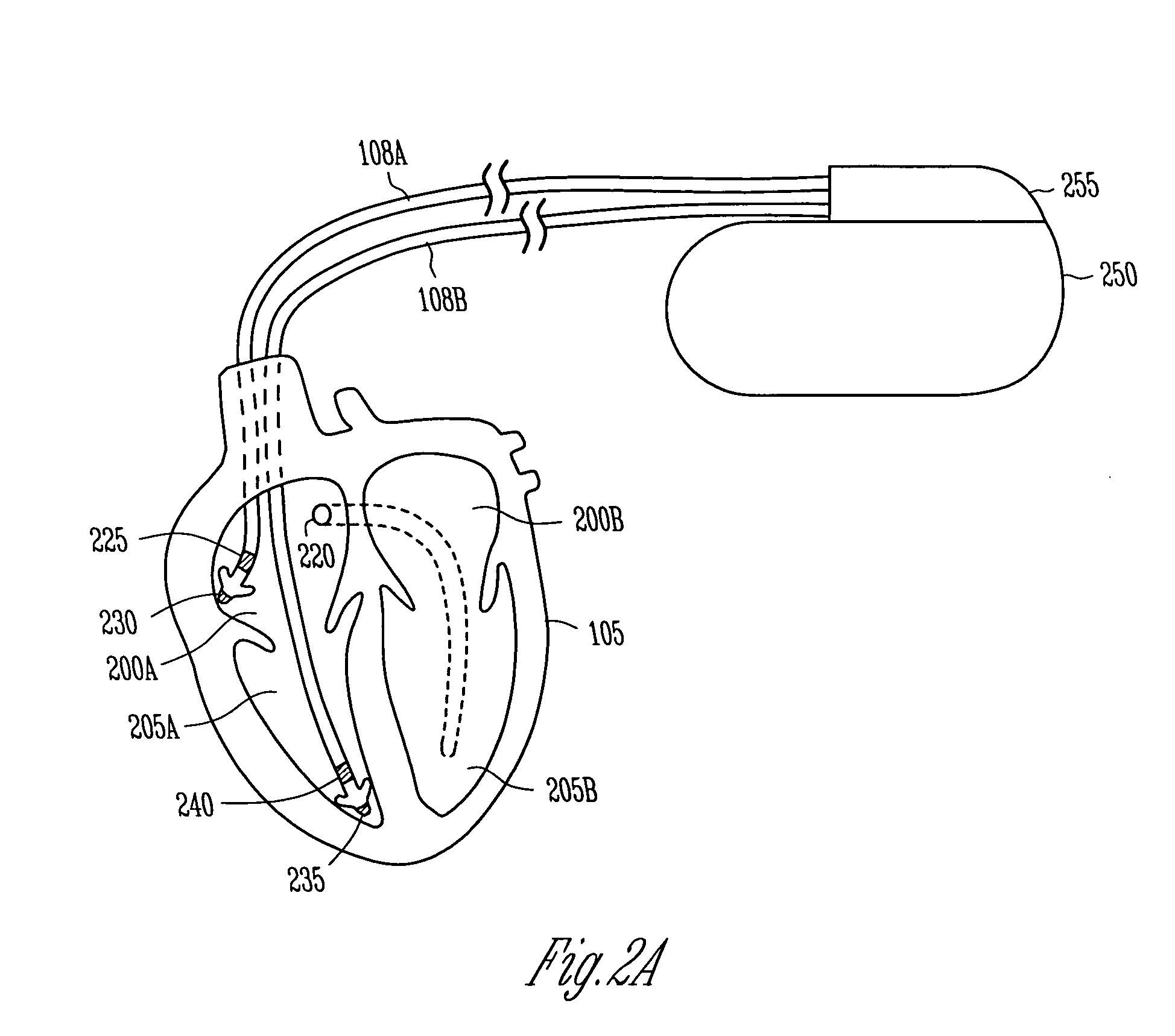Dual sensing for brady-tachy pacemaker/ICD
a brady-tachy pacemaker and dual sensing technology, applied in the field of implantable medical devices, can solve the problems of under-sensing of the sense amplifier, patients using imds to treat tachyarrhythmias may also be adversely affected by over-sensing, and high-energy shock therapy is not delivered
- Summary
- Abstract
- Description
- Claims
- Application Information
AI Technical Summary
Problems solved by technology
Method used
Image
Examples
Embodiment Construction
[0020] In the following detailed description, reference is made to the accompanying drawings which form a part hereof, and specific embodiments in which the invention may be practiced are shown by way of illustration. It is to be understood that other embodiments may be used and structural or logical changes may be made without departing from the scope of the present invention.
[0021] This document discusses systems and methods for improved detection of cardiac events. The efficacy of a medical device in treating abnormally rapid heart rates is often expressed in terms of sensitivity and specificity. Sensitivity refers to the ability of the detection scheme of a device to effectively detect an abnormal heart rhythm that the device is to treat (e.g., ventricular tachycardia or ventricular fibrillation, or to distinguish these abnormal rhythms from noise). Specificity refers to the ability of the detection scheme of a device to avoid treating those rhythms that the device is not inten...
PUM
 Login to View More
Login to View More Abstract
Description
Claims
Application Information
 Login to View More
Login to View More - R&D
- Intellectual Property
- Life Sciences
- Materials
- Tech Scout
- Unparalleled Data Quality
- Higher Quality Content
- 60% Fewer Hallucinations
Browse by: Latest US Patents, China's latest patents, Technical Efficacy Thesaurus, Application Domain, Technology Topic, Popular Technical Reports.
© 2025 PatSnap. All rights reserved.Legal|Privacy policy|Modern Slavery Act Transparency Statement|Sitemap|About US| Contact US: help@patsnap.com



